Part 2: When the AI Leaderboard Just Doesn’t Look Like You
Interrogating Time’s 100 Most Influential People in AI 2025 List
A Top 100 list might read like entertainment, but in reality it works a lot like an algorithm. It ranks, sorts, and decides who rises to the top of our collective attention. In the same way Google decides which links we see first, TIME decides which people get to symbolise “influence in AI.” And, just as with technical algorithms, the design choices behind these lists matter. They reflect the interests of their creators — in this case, a Western media institution — more than they reflect the messy, global, diverse reality of AI itself.
This is Part 2 of a 2-Part series from (margin*notes)^squared. And its an important topic, so I’m making this series free for everyone. You can read Part 1 here.
Part 1 of this series showed how the TIME100 AI 2025 list works like an algorithm: it sorts, elevates, and amplifies some voices while leaving others invisible. Though framed as a global celebration of AI influence, the list skews heavily toward Americans, men, the Global North, billionaires, and Big Tech elites. In doing so, it doesn’t just highlight who’s influential — it reshapes our imagination of what influence looks like, narrowing the story of AI to wealth, corporate power, and proximity to Silicon Valley.
Digging into the Data: What the List Tells Us
This list presents an American-centric universe. It misses the mark on the breadth and depth of creativity, intelligence, experience and determination that exist at the periphery – in Southeast Asia, in Africa, among the Global Majority, among the disabled, among gender and sexual minorities, and much more.
One might call it a who’s who of America’s digital elite, with a little color sprinkled around the colonial edges. The bigger problem is that this wasn’t billed as America’s list — it was billed as the world’s. If it were truly intended as an American list, we could have judged its diversity on that basis. But framed as global, it creates cause for concern.
Out of 97 people whose nationality could be reasonably ascertained for this report:
61% are American citizens
15 (at least) with dual/triple citizenship, of which 12 (at least) also have American citizenship
Among non-Americans, most live or work in the United States
Of the 94 people whose country of residence could be confirmed, 71% live and work in the United States. That’s something to think about: TIME has situated nearly three-quarters of AI’s “leaders, innovators, shapers, and thinkers” in a country that represents barely 4% of humanity.
The list reinforces the idea that AI influence = U.S. affiliation. But AI is a global force — with local impacts and international innovation — so why isn't the list?
Global North Over Global South
It should now come as no surprise, then, that nearly three-quarters of TIME’s list hail from the Global North. The 23% with citizenship from the Global South are often not based there, but living and working in the United States, likely drawn to more lucrative opportunities, facilities, and resources.
The places most affected by AI-driven displacement, surveillance, and inequality are underrepresented in this authoritative list of who is shaping the global AI conversation. This includes regions such as Africa, Latin American, Southeast Asia and the Pacific. Not to mention the most vulnerable in conflict zones, facing environmental degradation and climate emergencies, and among people on the move.
Just to be clear, this is not because there are no leaders, innovators, shapers, or thinkers from these places. They exist. They are doing extraordinary work on health, climate, education, human rights, and more. The problem is not the absence of talent or vision in the Global South. The problem is that TIME’s lens seems not to have looked far or wide enough to see them.
Who Gets Counted, Included, and Elevated? Mostly Men. Mostly White.
TIME didn’t release demographic data — but I worked on analysing it manually through open source research. There is likely a margin of error as determining someone’s identity (ethnicity, gender identity) is inherently personal. Despite the likelihood of some errors, the results were overwhelming.
70% men
Predominantly white (59%), especially among those in leadership or billionaire categories
Women of color (11%) were barely represented. Black, LatinX and Middle Eastern/North African fared even worse.
Pacific Islanders – not a mention. First Nations people – nada.
When we consider both gender and ethnicity on this list, the picture that emerges is this: white male privilege.
Of the 99 people whose gender and 98 whose ethnicity could be reasonably identified, 46% are white men. White women account for less than a third of that number. By contrast, women from minority groups fare better. Among Asians, half are women. Among Latinx/Hispanic and Black honorees, women outnumber men — 4:3 and 3:2, respectively. In other words, it is only at the margins that we see anything resembling improving gender equity — and even then, the sample sizes are small.
So, this is what the list looks like at the macro level for TIME’s influential people in AI. But TIME divides up their list and sorts people across four categories: LEADERS, INNOVATORS, THINKERS, and SHAPERS. I thought it might be relevant to take a closer look at what these groups look like on the list. And since TIME didn’t provide their definition of these categories, I thought I’d take a stab at it — for context. So that we can better understand the make-up of the who TIME posits as influential across these categories.
TIME’s Categories, Decoded
Leaders – In practice, this mostly means CEOs, billionaires, and high-ranking executives whose influence comes from money and market share rather than broad representation or democratic governance (all were from the private sector).
Innovators – Generally founders with big exits or tech entrepreneurs from elite ecosystems, rather than grassroots builders solving local problems.
Shapers – Media personalities, cultural figures, and public advocates who help legitimize AI in the public imagination — but few shaping it from the margins.
Thinkers – Predominantly academics from elite universities, with weak recognition of knowledge systems across the Global Majority.
I work on AI governance, ethics, and policy — a space that has long emphasised fairness, inclusion, and confronting bias. This list falls short. Beyond editorial choices, it reflects how structural discrimination, colonial legacies, and today’s digital colonialism shape who gets visibility, resources, and recognition as leaders, innovators, shapers, and thinkers.
And then there’s the money. If influence in AI is partly about ideas, TIME’s list makes it clear it’s also very much about capital.
Billionaires and Executives
I was able to uncover publicly available net worth information for about half the people on the list. In some cases, I made cautious estimates based on context — for example, if someone was the CEO of a company recently acquired for hundreds of millions or billions of dollars, it was reasonable to assume their personal net worth exceeded US$50 million. For half the people on the list I could not arrive at a strong conclusion on net financial worth, as indicated in the chart below.
The analysis shows that roughly one-third of those whose wealth could be reasonably estimated had more than US$50 million, while one in five (or 20%) are USD billionaires. Altogether, about half the list falls into the category of wealthy or extremely wealthy, measured in millions to billions.
This is telling. This list isn’t just showcasing influence in AI — it is also reflecting the deep entanglement of wealth and visibility. Influence here seems to be measured not only by ideas or contributions, but by proximity to capital.
Remember, wealth is not neutral. When lists like this elevate billionaires and ultra-rich founders as the faces of AI, they send a powerful message: the future of this technology belongs to those who already control vast resources.
It narrows our imagination of leadership to those who have “made it big” — rather than those working at the margins, in public interest, or in communities most affected by AI’s deployment. Or those impacting national and regional regulatory regimes. Developing innovative sandboxes. Creating use cases that improve human flourishing for the most vulnerable and marginalised.
The sector breakdown shows just how skewed this list is toward wealth and power. More than half of those named come from the private sector, dominated by executives from Big Tech companies — many of them billionaires. Academia is the next largest category, though representation tilts heavily toward elite universities.
By contrast, voices from civil society, grassroots AI research, or public-interest technology are rare, and government or intergovernmental leaders are barely represented. The sub-sector view sharpens the picture even further: 44% of the entire list is concentrated in American private tech alone, with only token representation from African, Asian (non-Chinese), or other regional tech ecosystems.
This frames “influence” as a function of capital and institutional power — not impact, ethics, or innovation from the margins.
In other words, the TIME100 AI list celebrates individuals, but also amplifies the dominance of corporate elites, while marginalising the sectors most likely to hold AI accountable to the public good and ensure the technology serves us as citizens.
Who’s Missing?
What if influence and leadership were measured not by wealth or platform reach, but by responsibility, insight, and innovation from the margins?
Here are just some of the kinds of people and communities who should not be overlooked and who are absolutely central to AI’s future:
AI ethicists – addressing dual-use technologies, surveillance, exploitation, and human well-being
Grassroots AI practitioners in the Global South – building health-tech tools or flood prediction systems, or applying AI to climate justice and ensuring human rights defenders remain safe
Indigenous technologists – advancing data sovereignty, environmental AI ethics, and land rights
Gender and Accessibility advocates – pushing AI forward in the service of disability justice and gender equity in development, deployment and use of frontier technologies
Public-interest researchers and whistleblowers – exposing biased algorithms and corporate abuses
What a difference a list makes, eh?
So why not make another one — one that actually reflects the world?
Why This Matters
Lists like TIME100 don’t just reflect influence — they create it.
They shape how we talk about technology, who gets funding, sits on panels, is given time on global stages, and whose values drive the AI agenda. They greatly influence who gets a seat at the table where policies are debated, priorities are agreed upon, and decisions are made.
But without care, lists like this risk replicating existing economic and political power, rather than challenging it.
If AI is supposed to change the world, we need to ask if we are inclusive enough in the voices we empower: Are we building the bench of DIVERSE leaders, innovators, shapers and thinkers the world needs to ensure AI serves ALL of humanity?
If, like me, you're looking at the TIME100 list and it doesn’t seem to look like you or reflect your world, it means we have much work to do. The story of AI is still being written.
So grab a pen.
Er, keyboard.
Want to go deeper with me?
I’m working on a complementary list — one that celebrates under-recognised innovators, activists, and researchers shaping AI in their communities. In our world. Here in Southeast Asia. In the Global Majority. Within communities of gender and sexual minorities. Among those asking the tough questions and holding power to account.
👉 Have names to suggest? Email me or comment below.
👉 Want to challenge the narrative? Share this post.



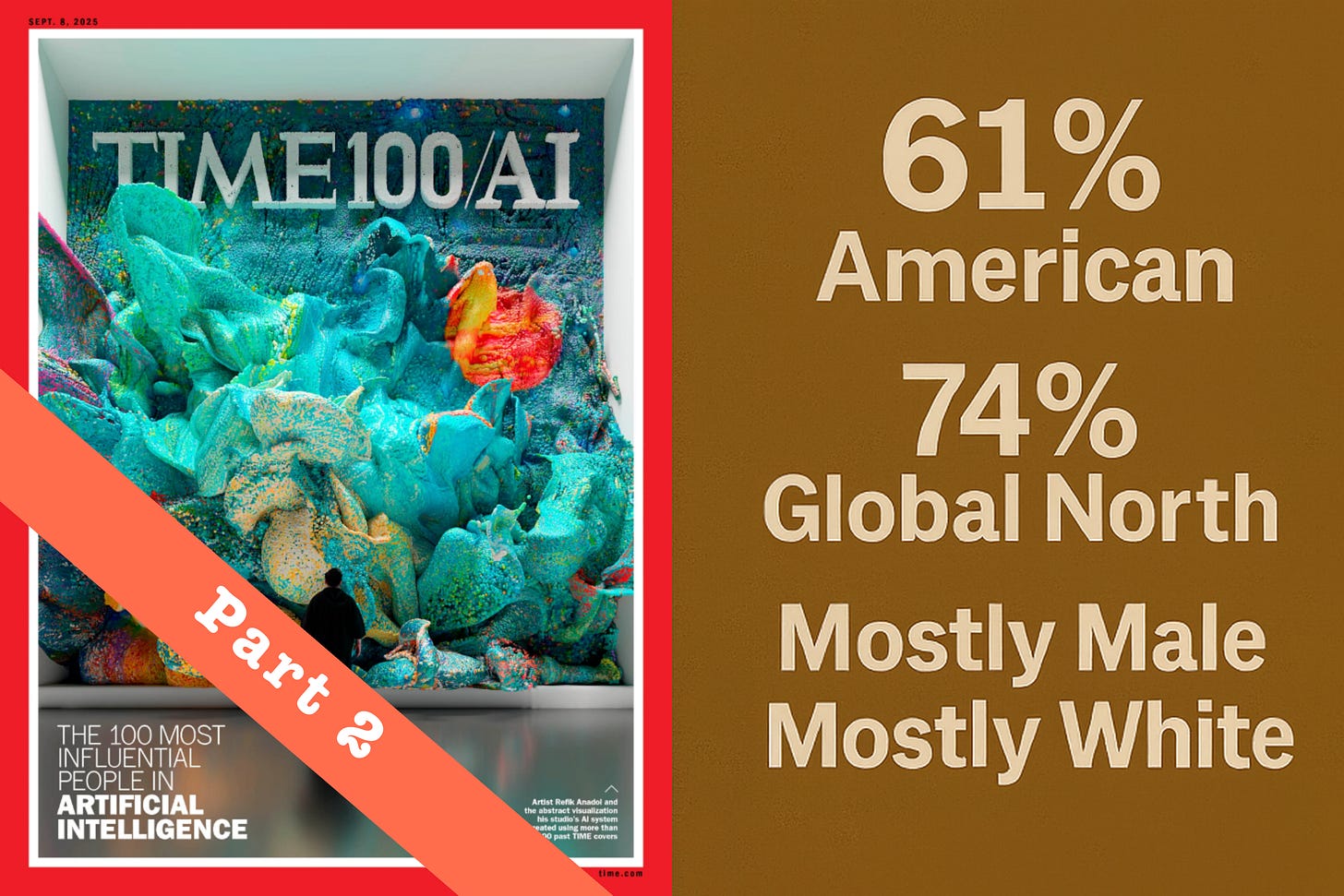
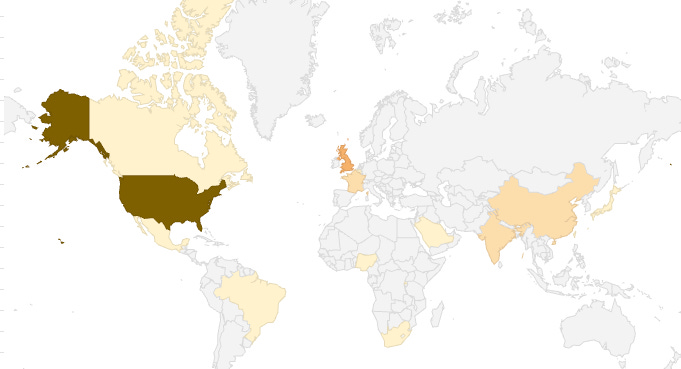
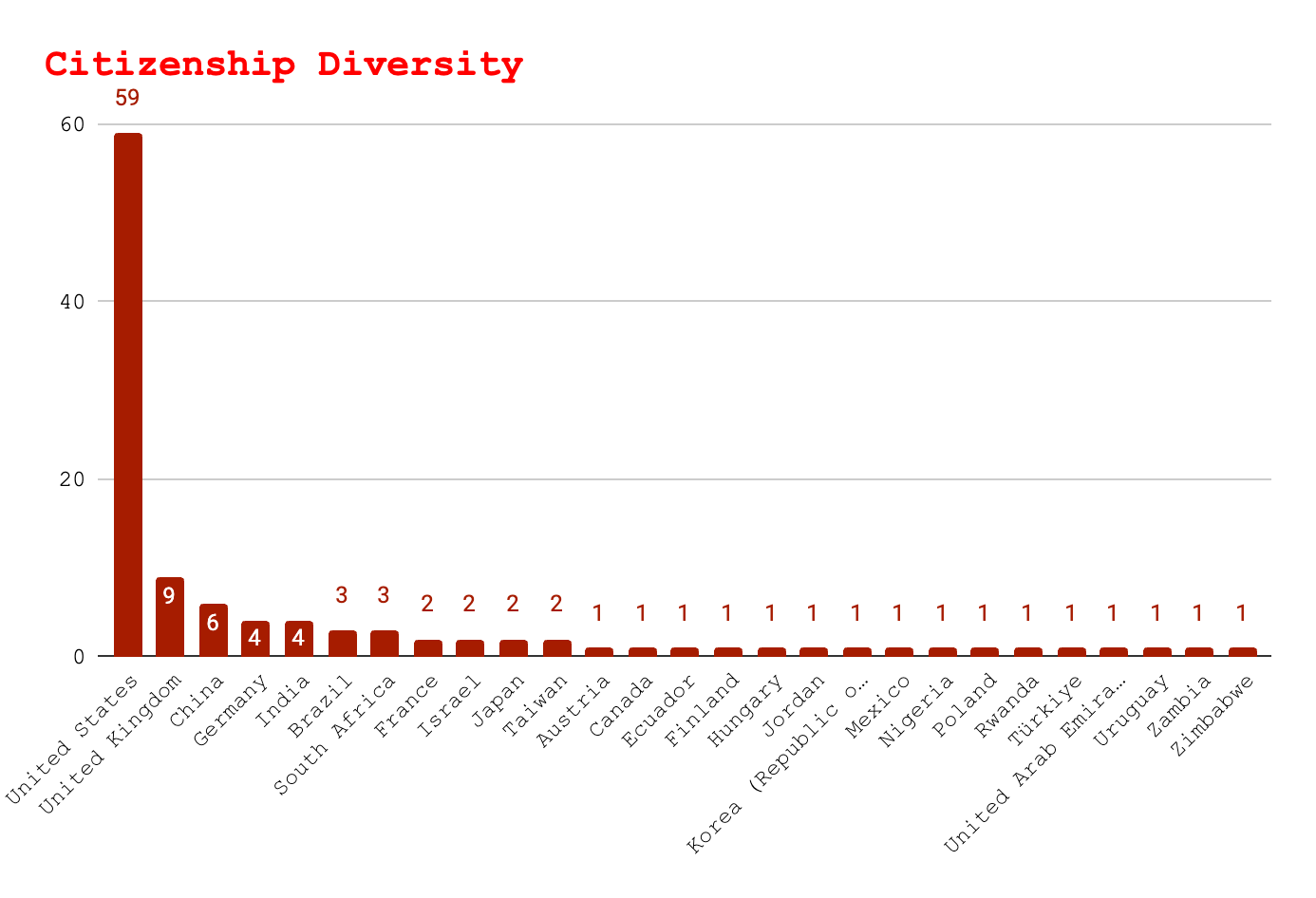
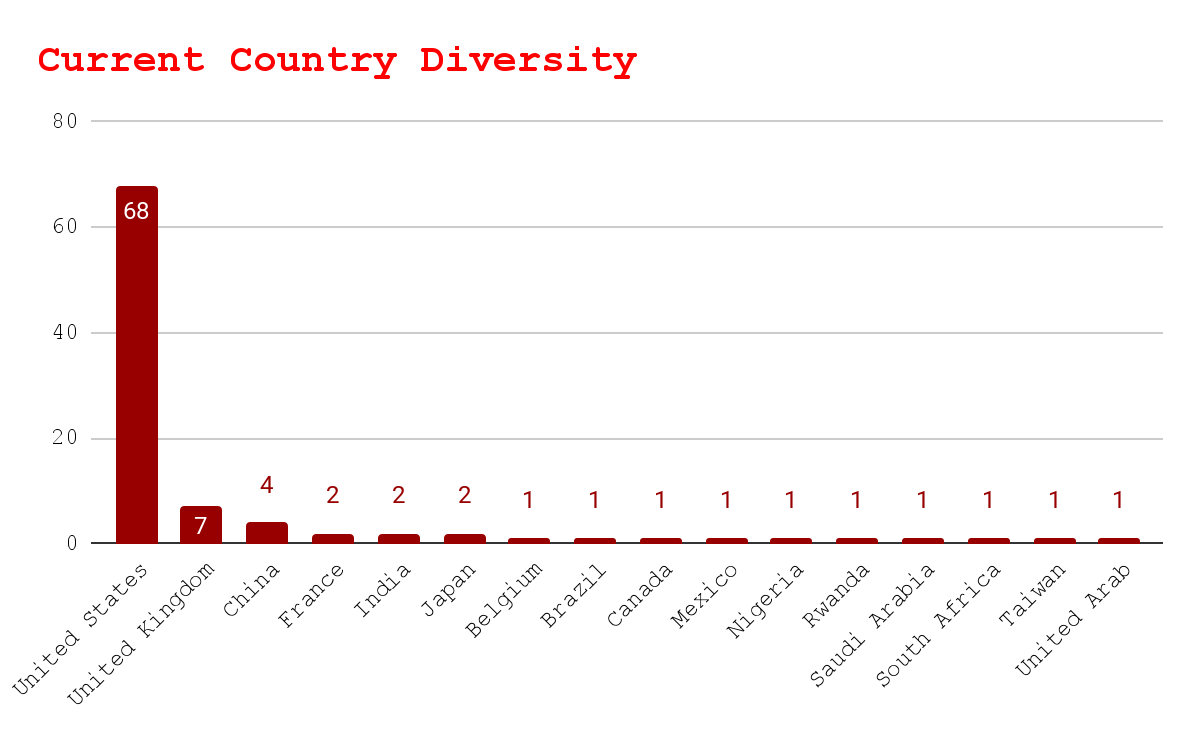

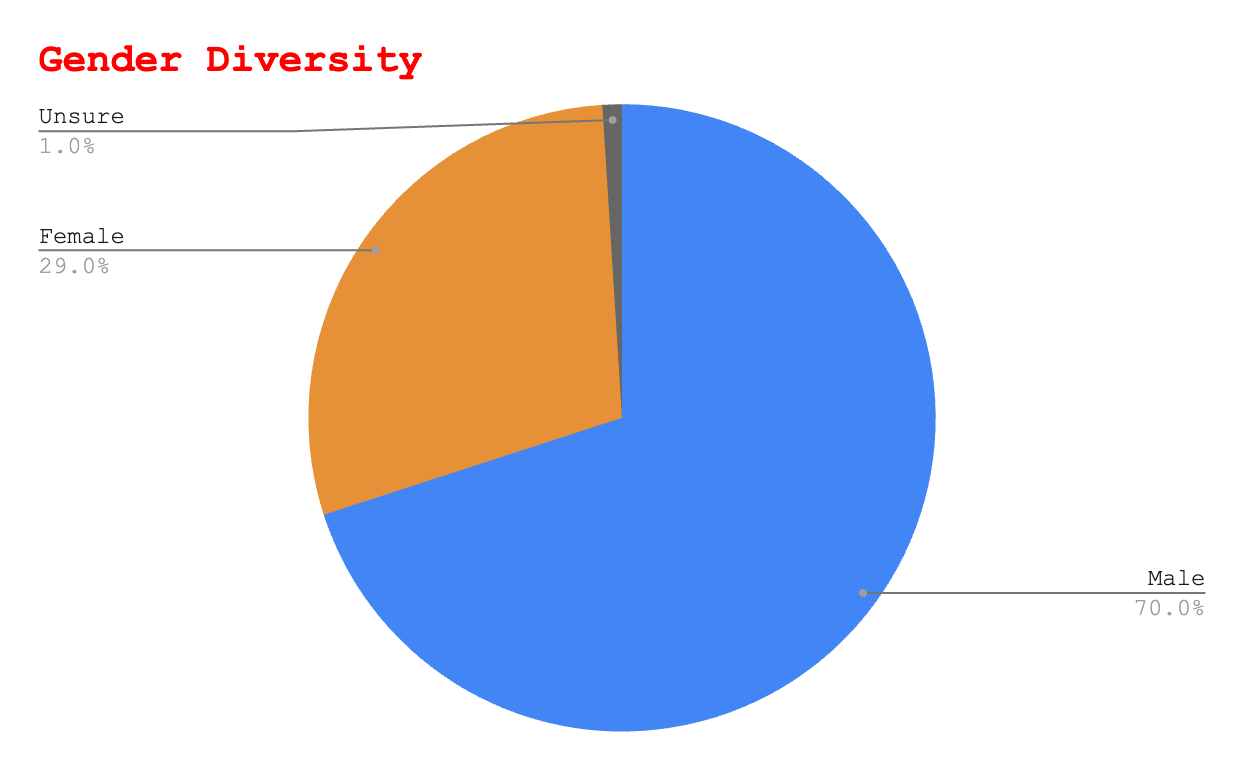
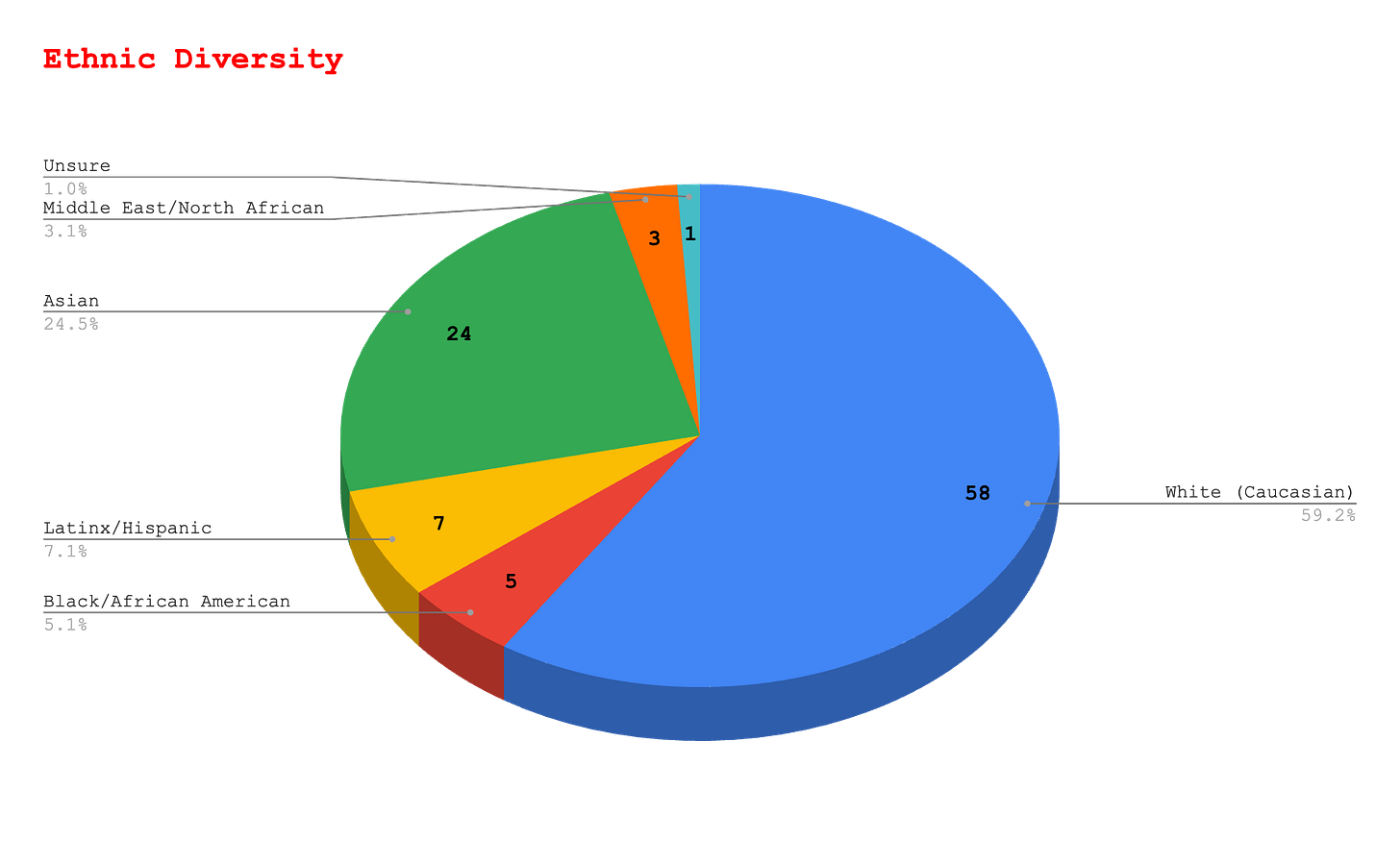
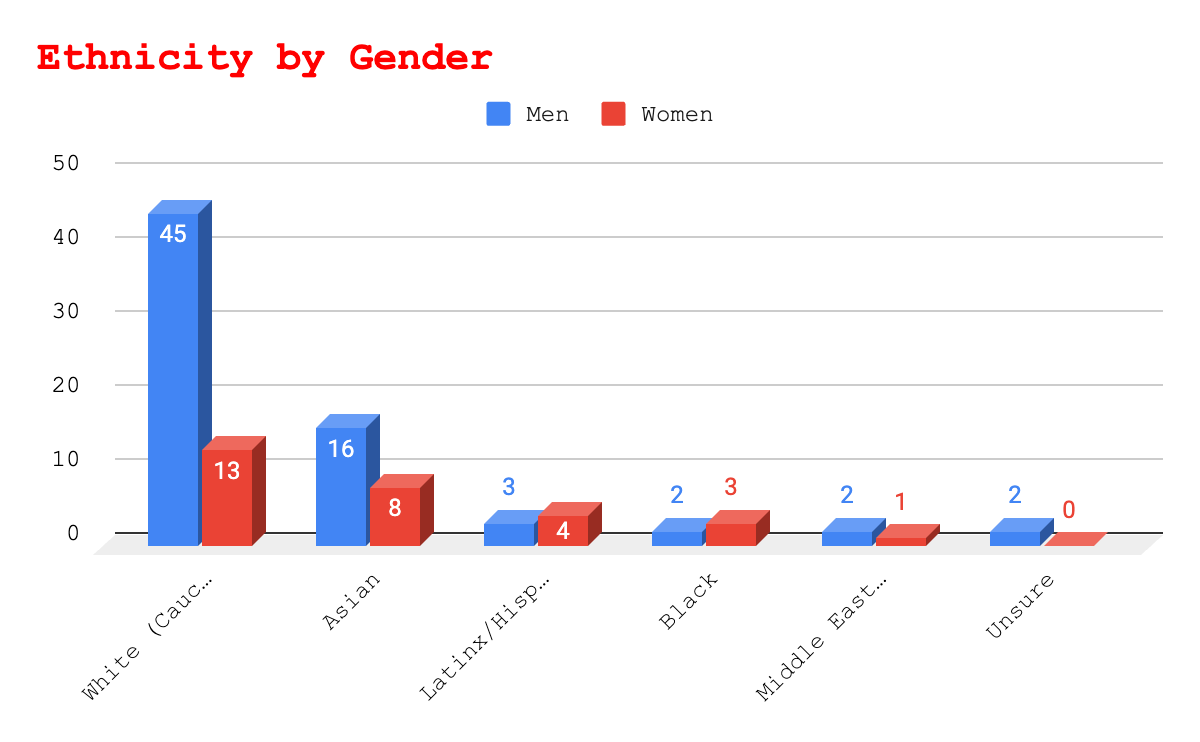

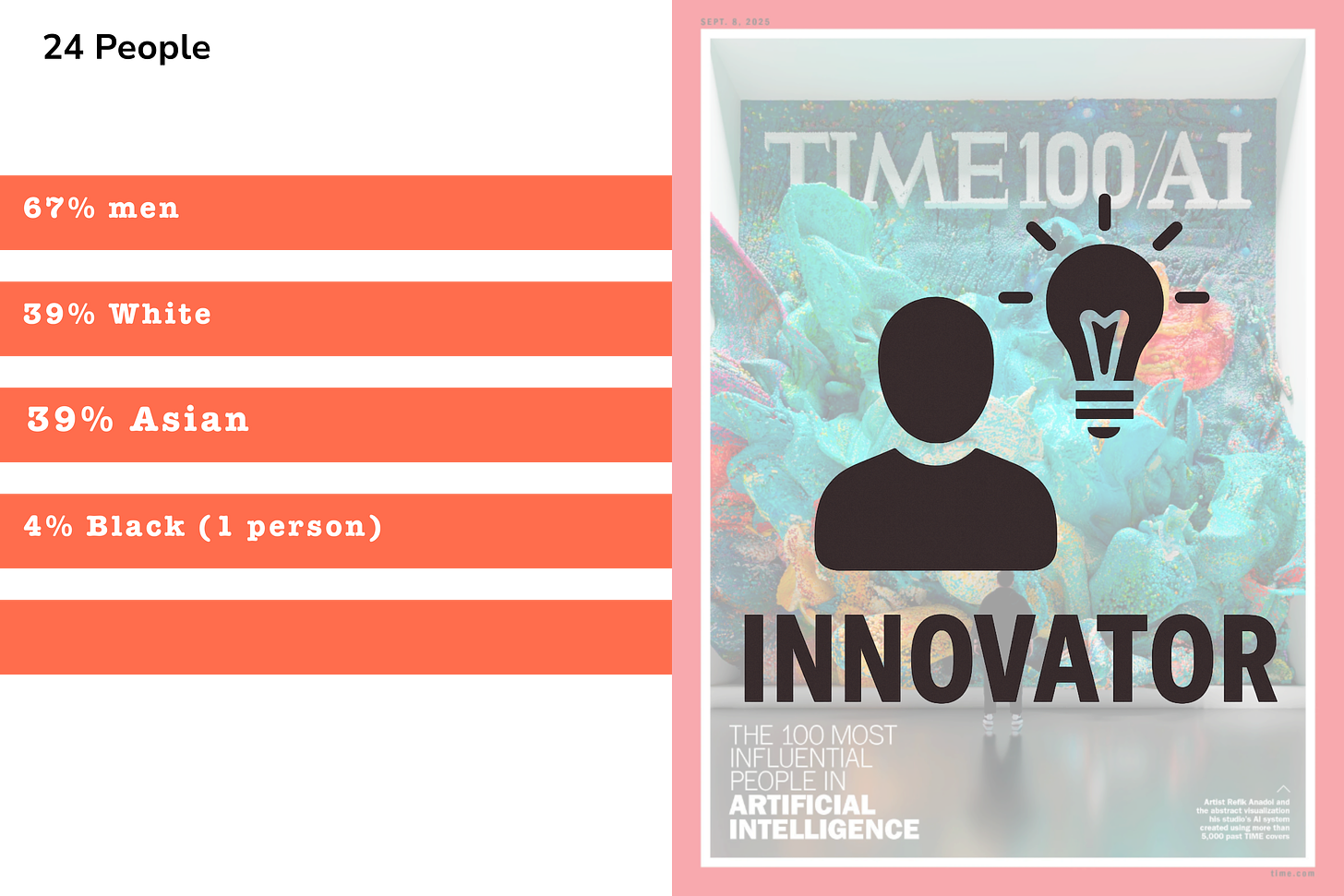
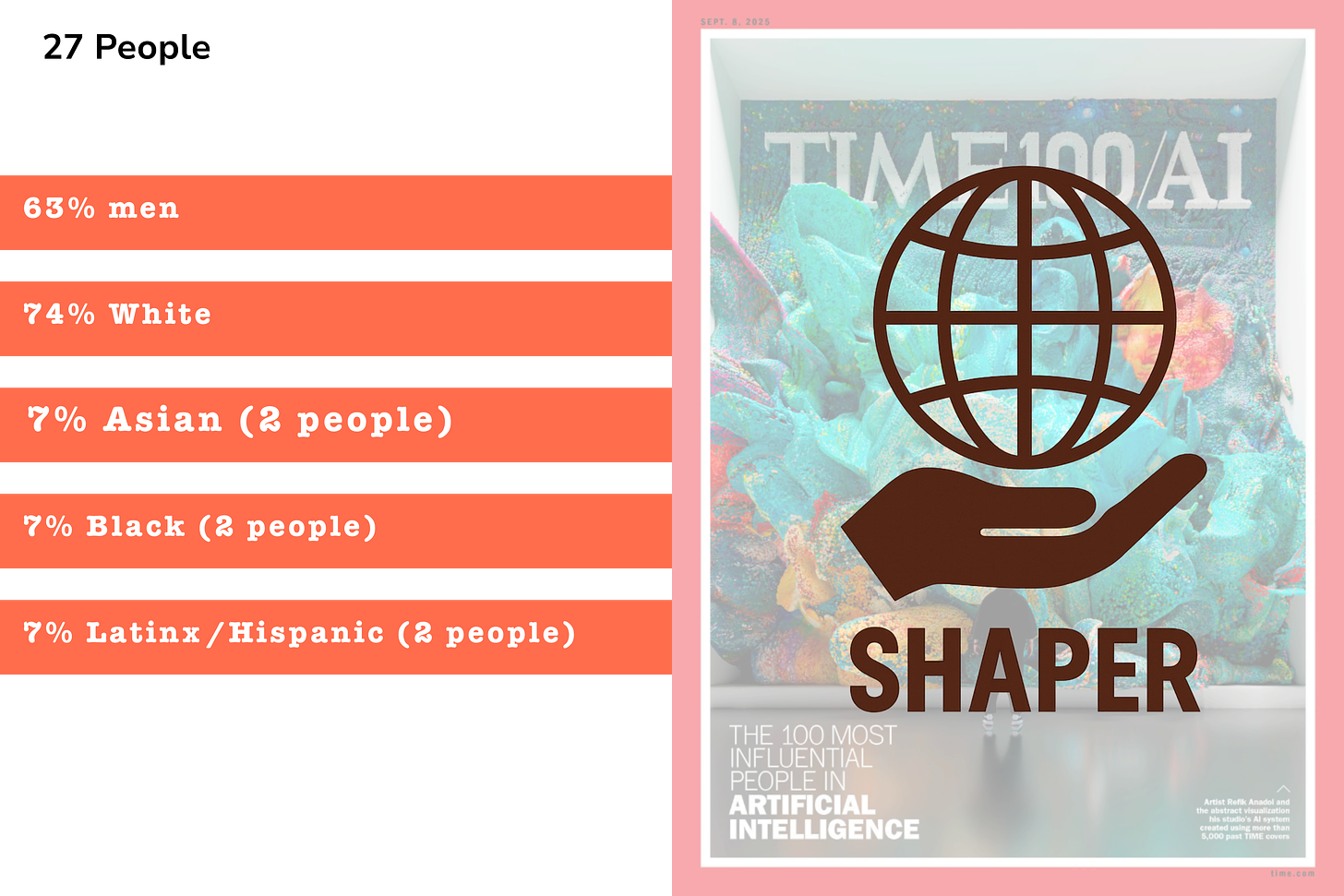
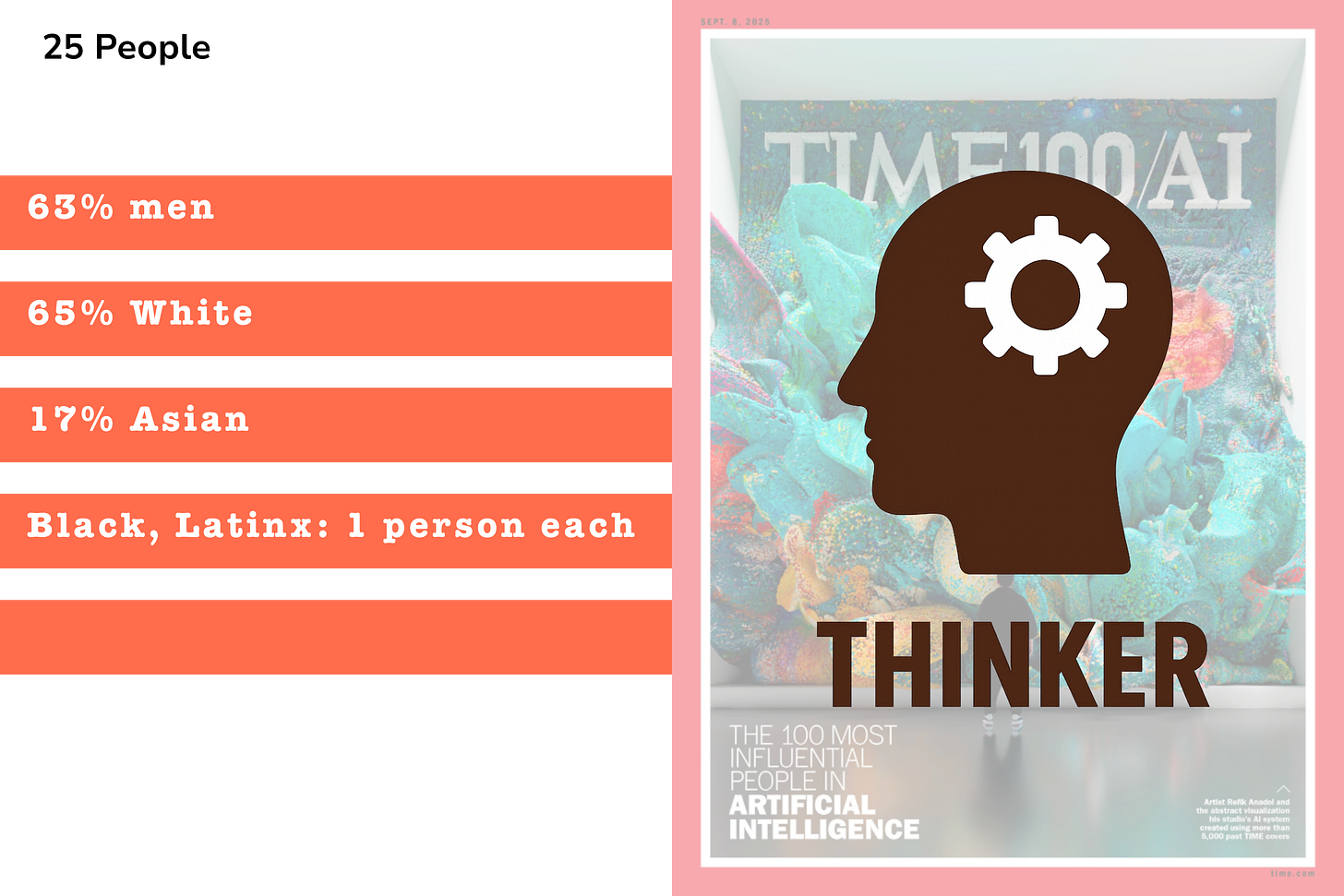
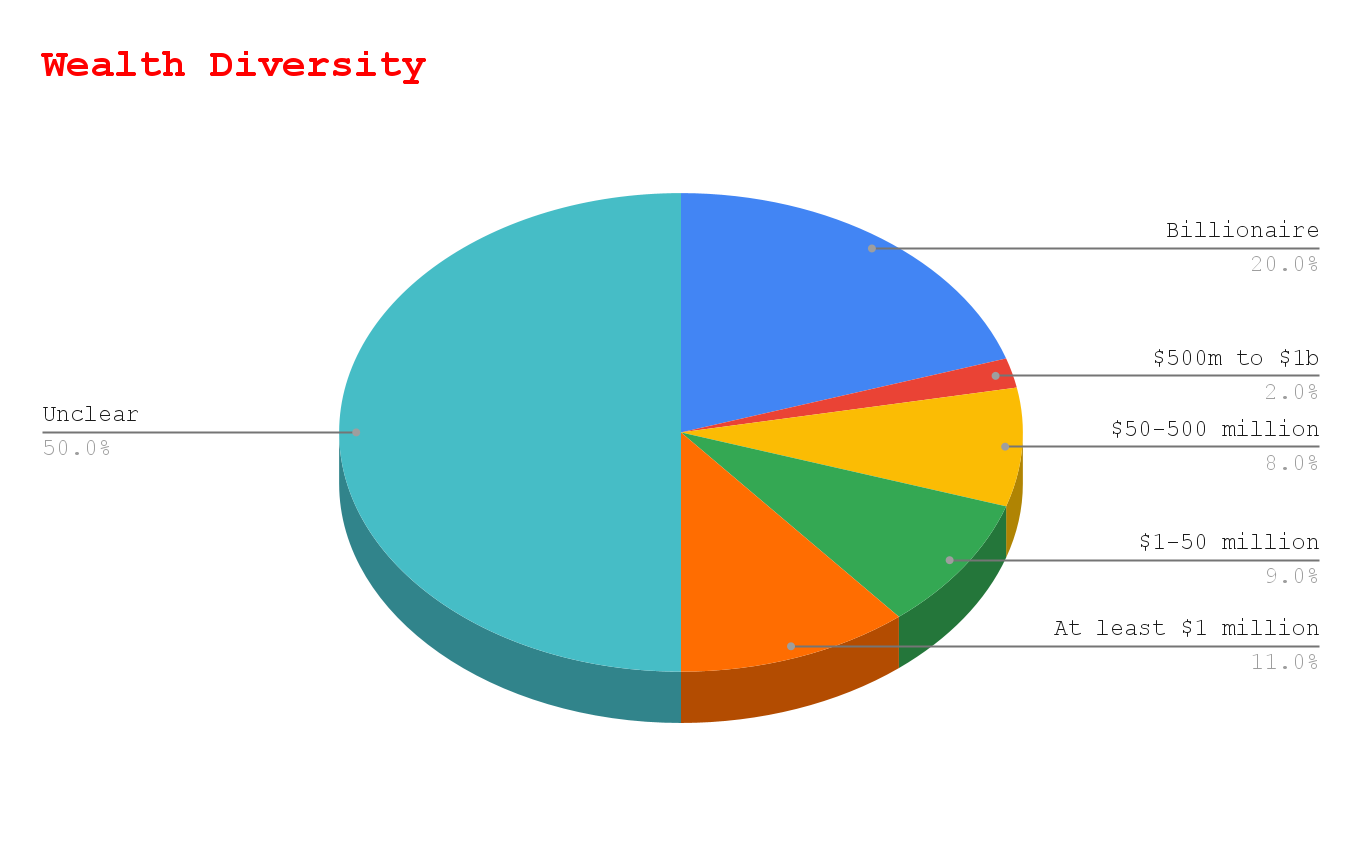
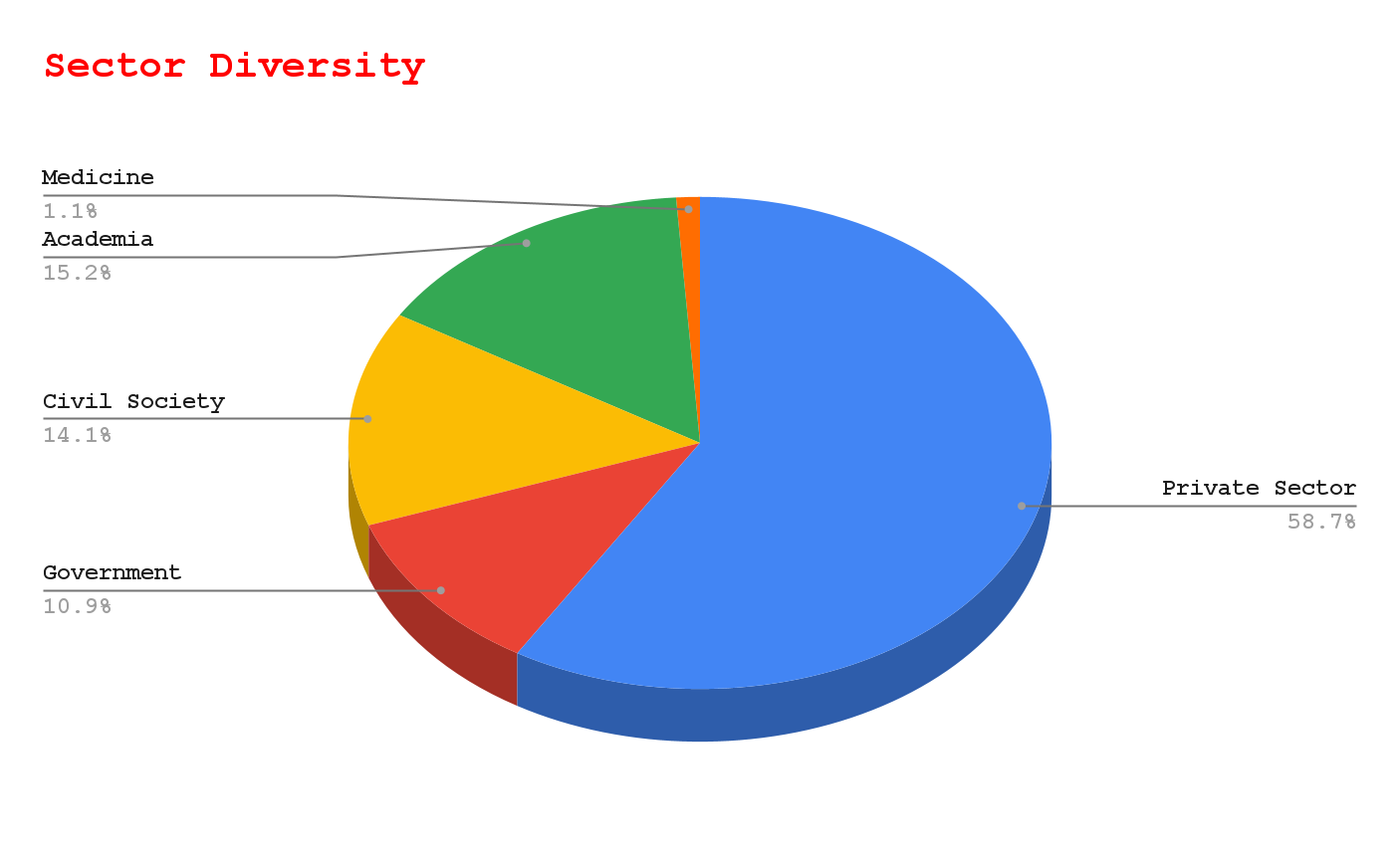
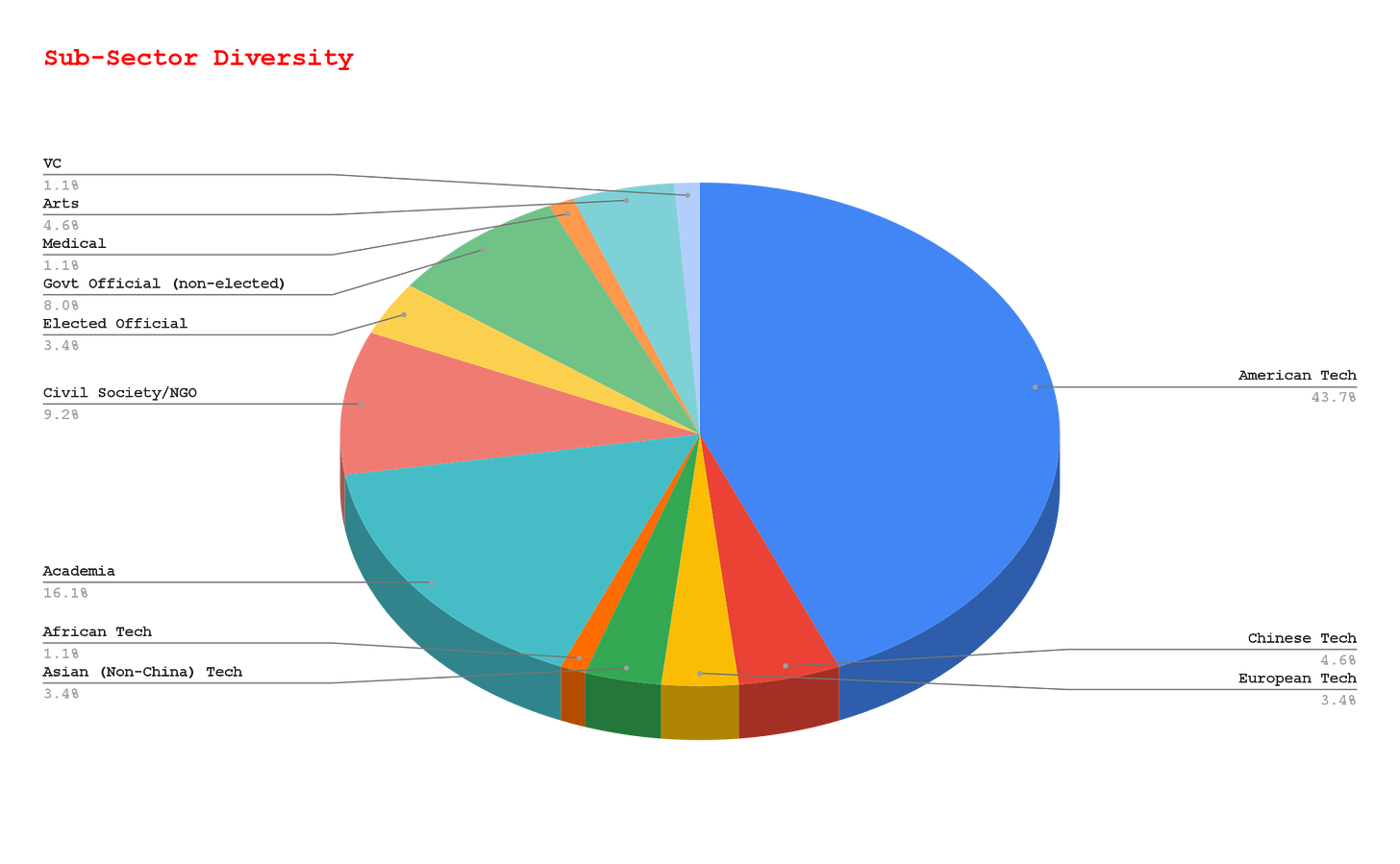
Nicely done!